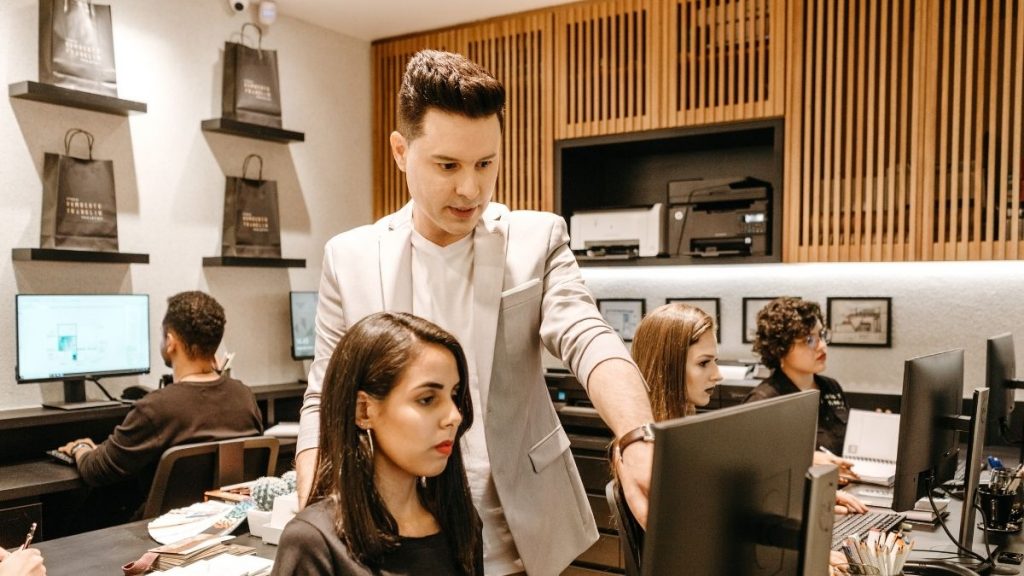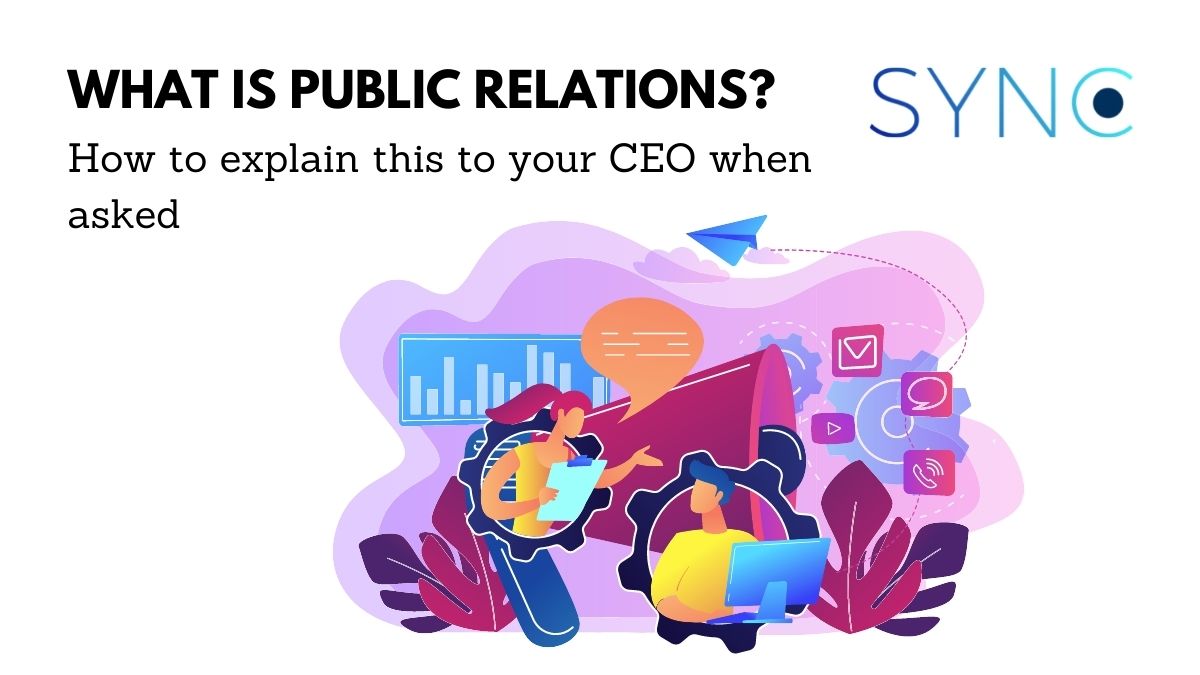The words public relations and publicity get bandied about without any real thought about what they actually mean. To many, it may mean that a video is going viral or that there is a publicity stunt that grabs the attention of the public. In reality, it is much more than merely catching a lucky break or orchestrating some traction. So, what is public relations, really?
Due to the uncertainty about how PR works on a day to day basis, it is often seen as an activity that is not necessary. This misconception of the meaning of public relations is a big mistake, as having PR strategies in place can be the difference between make or break for a brand.
But what is public relations? And how can you convince your CEO and other stakeholders that employing a PR professional is essential for your company? We take a deeper dive into the importance of PR and how it can help your brand acquire new customers and woo brand evangelists.
What is public relations?

We often hear people commenting on an event or viral video as “a PR stunt done by company XXX…”, and it seems to encompass the general perception of the meaning of public relations. While getting massive views and likes for little work is pretty awesome, virality is not as easy as it seems.
So, what is public relations and its role in consumer conversations? Public relations is the act of building a company’s brand image in the eyes of the general public. So, yes, a viral video or a stunt that garners attention may help in the short-term; it doesn’t ensure that the brand stays in the public’s minds as they are constantly bombarded with new images, stories and messages daily.
PR is a long-term strategy that functions by working closely with the media. By courting and maintaining solid relationships with the press, a PR professional can help direct the brand’s narrative in the media and portray the company in the best possible light.
A brand can establish itself in the media and public’s eyes, secure its place in a crowded marketplace, quickly deal with bad publicity and rebuild trust between the brand and consumers if needed, through PR strategies.
How does it work?
The central premise of PR is the sharing of information to the general public, generally through press releases or kits, news stories, insights or visibility at events.
Getting information about the company’s story, its products, services and its reliability to the target audience is all part of the job. Through hard work and dedication to its goals to inform and educate, the PR practitioner engages in lots of research and legwork to help the public see what the company does, how it does it, and its values as a brand.
With research into the target audience, the PR practitioner can hone in on what resonates with them and target information releases that engage them. Then, with this knowledge providing an angle for an article or a social media post, they create the content that will bring the brand to the attention of the chosen demographic.
The PR team will pitch articles or send press releases to the relevant media outlet or journalists to promote the brand to reach the selected audience. While this may appear simple, it is not always possible to convince a media platform to carry your story or provide the required publicity. Getting rejected by media outlets is actually quite common. However, the risk of failure can be mitigated somewhat by establishing good relationships with the press and pitching articles to the correct people.
Read also: Why the practice of PR is both Art and Science.
While PR professionals’ work revolves around sending out press releases, preparing press packs, or engaging in conversations with the media, they also need to venture out and engage in activities in the real world. Attendance at corporate events, conferences and promotional activities can enhance the public’s perception of a brand.
Getting out there and meeting with the public, engaging in networking events and developing relationships with the press in person all assist in establishing a connection between the brand and its consumers. The creation of corporate videos, online and in-person events and other promotional activities also fall into the lap of the PR professional as they manage the brand’s image at every step of the process.
Why engage in PR activities?
When the question of what is public relations comes up, it’s important to know what you’ll be getting by investing in a PR strategy. Building a connection with consumers is the best way to raise sales and generate new leads in today’s busy market. Customers shop around for the best prices, but they also prefer to buy products and services from companies they feel connected to and trust. Creating an authentic bond between your brand and a potential consumer helps them to make clear purchasing decisions. They are more likely to buy when they feel part of your community or trust what you tell them.
With so much focus on online activities, particularly since the pandemic and now with Facebook and its subsidiaries creating a new metaverse, having a PR professional manage social media and online content is a must for most businesses. The PR expert will guide the online community, engage the consumers and build a narrative that is seen as trustworthy, authentic and shows consideration towards the consumer.
At the top of the PR pyramid is earned media, which is organically generated content on media sites – put simply, free coverage. However, when you factor in the work put in to create compelling narratives and disseminate it to the right people, it may not necessarily be free. Still, running a PR campaign has its own benefits. For one thing, it’s much more affordable than blowing the bank on large billboard advertisements. PR also has the potential to build consumer trust in a time where trust is thin – studies have shown that 92% of consumers trust earned media, as opposed to half who trust paid advertising.
PR content can vary from short, inspiring, educational or engaging social media posts to longer, value-giving blog posts or articles. Of course, you have less control over earned media than paid ads. That’s where a PR professional’s job comes in – they work together with brands and the media to come up with a favourable story for the public.
Together with building close relationships with the media, PR can help you form positive connections with the media and the public and foster trust in your brand. They elevate your reputation in the public eye and increase credibility, so if something negative happens to your company or a product, it is easier to fix as you are already seen in a positive light.
A good PR professional will help you stand out in the crowd and be heard over the cacophony of online noise. They can help you to spot opportunities to promote your brand and capitalise on trends or current affairs.
Working with the press and building a relationship with journalists makes getting publicity for new product launches or big company news more attainable. Landing an interview or a feature piece in a popular newspaper or magazine can substantially increase your visibility and assist in sales.
With a dedicated PR role, regular audits on how your brand is performing, monitoring social media conversations about your company and addressing issues as soon as they arise are all possible. Keeping abreast of what is being said, written or portrayed about your brand makes it possible to prevent unnecessary delays in damage control if your company’s reputation is under fire.
Read also: Should brands be jumping on the TikTok bandwagon?
Convincing the CEO

One of the challenges we face in the workplace is explaining the value of PR to bosses that have no clue. In order to help your brand, it’s important to know what is the meaning of public relations and how it can help the business. They may labour under the misconception that public relations waste time and have no quantifiable benefits or ROI.
This is far from the case. While some companies measure PR in terms of the amount of press coverage they receive or whether something goes viral or not, this is not a true reflection of the impact of a good PR strategy.
The number of times your brand gets mentioned in the newspaper, or other the press does not necessarily translate to revenue for the company. Social media metrics may also provide critical indicators in this digital age, with engagement on posts and shares being much more powerful. Clicks on Facebook or likes on Instagram create more inbound leads than a mere mention in a newspaper. They also help establish authority and trustworthiness.
It takes time to build this kind of brand sentiment, but having long-term PR objectives will help ensure the company’s longevity. That goal sums up what is public relations for a company.
Explaining the meaning of public relations to your CEO and helping them understand how it concerns the brand’s image and the bottom line is sure to convince them of its importance.
Want to know more about what is public relations and how PR can help your business? Get in touch with us at hello(at)syncpr.co today.

